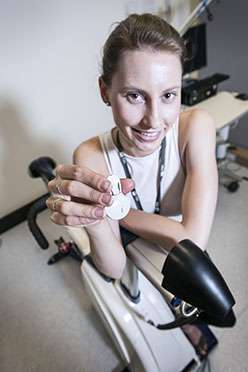Exercise away diabetes risk

A QUT study will investigate the impact of different exercise strategies for men at-risk of developing diabetes.
Stephanie Zietek, a Masters researcher from QUT's Energy Metabolism Group, is looking for volunteers to determine how exercise can be used most effectively as a countermeasure to the negative effects of prolonged sitting on blood glucose levels across the day.
A 2012 study into the link between sedentary behavior and health problems found people who spent most of the day sitting or lying down while awake had a 112 per cent increase in the risk of diabetes.
"My study monitors blood glucose, or sugar, levels in response to different dietary intakes of carbohydrates and alternative exercise strategies in males who have a risk of developing diabetes," Ms Zietek said.
"The aim of this research is to find out the precision needed to monitor blood glucose and what type of exercise is best to reduce levels throughout the day.
"I hope to find the right formula for regular exercise to maximise results in lowering blood sugar levels, which over time should reduce your risk of developing diabetes and cardiovascular disease."
The study needs men aged between 20 and 55 who complete fewer than 2 hours of exercise each week. Risk of diabetes will be assessed with a short questionnaire with the score determining eligibility for the study.
Participants will undertake four separate experimental trials involving exercise and low and high glycemic index meals at QUT's Kelvin Grove campus. Each visit will last for about 12 hours, once a month.
Glucose levels will be measured using a Continuous Glucose Monitoring System, an innovative device that reduces the need for multiple finger prick blood samples.
Ms Zietek's supervisor, Adjunct Professor Nuala Byrne from QUT's School of Exercise and Nutrition Sciences, said participants will receive accurate measures of their body composition (fat mass and lean mass), current fitness level and 24 hour glucose response to each trial.
"Participants will also learn about the importance of diet and exercise in controlling blood sugar for health," Professor Byrne said.
"They will gain a better understanding of how different types of food, for example white bread versus whole grain bread, cause different responses in blood sugar levels.
"This is important information for individuals who are at risk of diabetes."
More information: "Sedentary time in adults and the association with diabetes, cardiovascular disease and death: systematic review and meta-analysis." Diabetologia DOI: 10.1007/s00125-012-2677-z

















